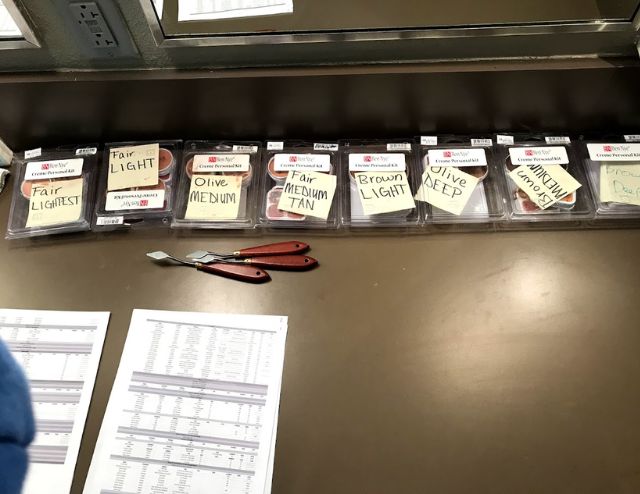Designing Hair and Makeup Looks
Theatrical productions are multi-artist creations, and designing the hair and makeup for the characters is one part of this process. There are a number of things to consider when designing hair and makeup looks. First, consider the script itself. What does the script say the characters look like? When is the story set? Where is it set? This information can be used to create a general idea and begin seeking out reference images.
Next, consider the interplay of the other artistic designs for the production. What will the lighting be like? What are the characters' costumes like? How intricate is the set? What colors are visible? How big is the theater? Use these factors to determine color palettes and find hair and makeup styles that look cohesive with the production. These details will also help you find reference images, and they will also help you determine the boldness and scale of the makeup needed for the production.
Additionally, consider the performers' positions. If an actor is in multiple ensemble roles, then those characters will likely not be able to have extravagant makeup because the actor will not have sufficient time to switch between the many makeup looks. Additionally, a look for one character may wholly contradict the look for another character. Thus, you will need to understand to be creative and flexible when creating your designs.
Finally, consider the vision of the director and the performer. If the director's vision conflicts with yours, then you need to address what alterations you need to make. Additionally, if a performer feels that their makeup look does not fit their vision of their character, consider what alterations can be made.
Remember, the design process is a process of research, designing, trials, and change. Flexibility is key because alterations are inevitable. Sometimes things go wrong during the production. Sometimes designs are not feasible, whether for manpower reasons or artistry reasons. In those cases, changes will need to be made. Acknoweldge those changes and work with them.
Preparing Materials
Prior to the start of the production, you should ensure that the performers have adequate products available to complete the planned makeup looks. This will include creme paint, powders, eyeliners, false eyelashes, and other products. See what you are able to provide to the performers, and communicate with the performers about what they will need to bring or are allowed to bring independently.

We recommend that every performer gets their own creme kit. They are available in shades PK-0 through PK-6. However, some companies provide creme kits in a communal setting where needed product is taken and used without contaminating the paint pots. Consider which option will be best for your company and production.
If your designs involve uncommon colors, unique products, or technical designs, then it may help to provide products to the performers. This is especially true for new performers who may not know much about stage makeup yet. While you can tell them what to purchase, it may help to provide the performers with basic materials to start the production. However, this largely depends on the available budget, so make sure to contact your director about these issues.
Finally, make sure that you have enough product (and backup product) for the duration of the performance. The last thing you want is for the airbrush paint to run out after opening night or for the foundations to suddenly disappear due to the number of performers using the product. Although this may be difficult for first-time designers to gauge, we recommend having at least one to two creme kits on hand per week of the production. However, this will depend on how many performers will use specific creme kits. Make sure to get an idea of what products will need use throughout the dress rehearsal journey.
Communicating with Performers
You have your designs figured out. Now you need to share those designs with the performers.
